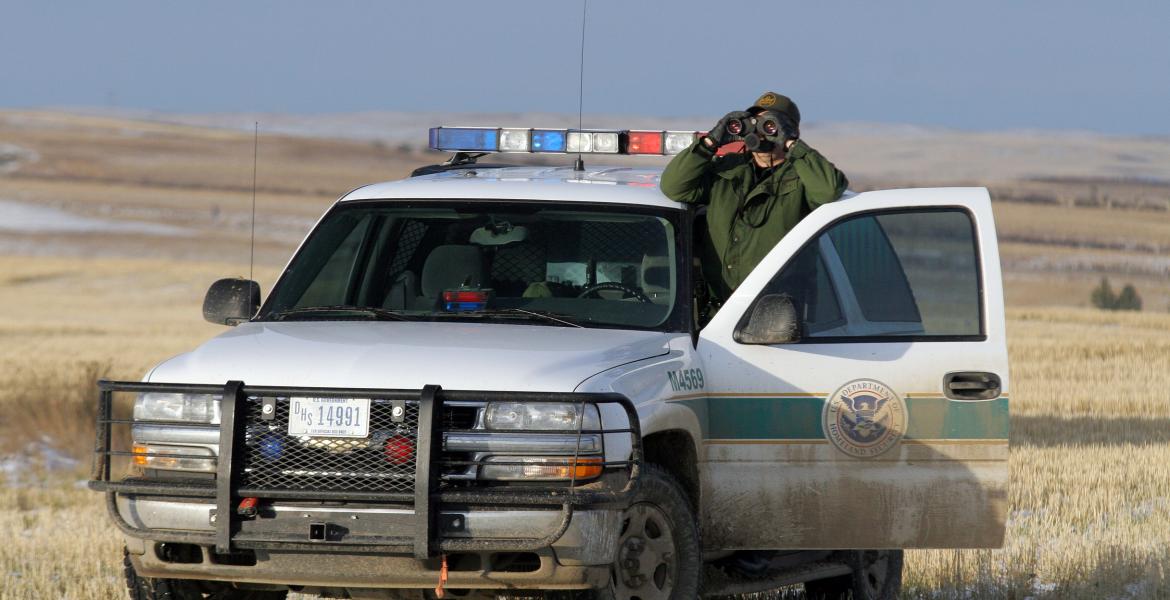"I want my son to be a real lady killer like I used to be," Air Force Staff Sgt. Israel Del Toro said, pointing to his 4-year old son. His beautiful wife, Carmen, from Guadalajara, Mexico and Israel’s greatest fan, smiles.
Del Toro, the athletic and handsome native of Chicago, was seriously injured Dec. 4, 2005 during combat operations in Afghanistan. His friends call him simply, "D.T."
Del Toro visited Laughlin Air Force Base in Del Rio in 2006 to thank Chief Master Sergeant Ruben Gonzalez, a native of Eagle Pass, who had acted as a liaison and advocate for his wife after Del Toro was injured. Carmen, who is still learning to speak English, relied on Gonzalez and his team of volunteers to not only translate for her, but to navigate the maze of decisions and financial challenges during the ordeal.
During his visit, Del Toro gave officers and enlisted alike a riveting presentation at Anderson Hall on the attack that changed his life forever, and provided insight into the sacrifices being made by our military in the War on Terror.
Del Toro concedes he is an adrenaline junkie. He excels in sports: football, soccer, and basketball. His athletic abilities made him a perfect match for a career in the U.S. Air Force in the Tactical Air Controller Party, or TACP career field when he completed basic training in 1997.
A TACP (pronounced "Tack-Pea") is team of usually two Air Force airman embedded with a U.S. Army unit on the battlefield, providing a direct line-of-communication to fighter pilots and bomber pilots in the air. Individually, they are called a JTACs (pronounced "Jay-Tack"), or Joint Terminal Attack Controllers. They call in air strikes. In the Air Force, enlisted personnel and officers alike joke that it is the only service where the enlisted stay behind in the safety of the base while the officers go out into combat, flying airplanes.
This is not so for the TACPs. The prestigious program requires physical fitness tests for acceptance and, once trained in one of the Air Force’s toughest programs, TACPs usually see more combat than a regular Army infantry soldier since there is a high demand for them and there are so few in the field to meet that demand. Del Toro was more than a TACP, however. He was a jumpmaster, a master parachutist (110 parachute jumps), and he completed helicopter assault school.
Del Toro was given ideal assignment to Italy in February 2005, assigned to the TACP detachment to the U.S. Army at its base in Vicenza. Previously, he enjoyed consecutive overseas tours of duty, either as a temporary duty (TDY) assignment or permanent base assignments in Bosnia, Iraq (Operation Iraqi Freedom), and training A-10 "Thunderbolt" pilots in Korea.
In Iraq, Del Toro was awarded the Bronze Star for combat operations in Fallujah. "It was given to me by the Army," Del Toro said. Emphasizing the significance of that, he added, "and the Army is pretty stingy with medals."
Italy was an exciting and exotic place to be assigned, and his family could join him this time. Also, Del Toro was an excellent operator in the field, according to his peers, and wanted to be in the action. His assignment in Italy brought him closer to the action in Southwest Asia where he wanted to be.
He received his wish in September 2005 when he was assigned to Combined Task Force Bayonet in Kandahar, Afghanistan. This joint force covers the south and southeast of Afghanistan and is responsible for provincial reconstruction teams in Kandahar, Lashkar Gah, Qalat and Tarin Kowt.
Since the U.S. overthrew the Taliban in 2001, the Afghan mission has shifted from all-out war to an insurgency war between the coalition forces and remnants of the Taliban and al-Qaida. While Army Corps of Engineers and contractors help rebuild the country’s infrastructure and assist the freely elected government there, combat units of the U.S. Army patrol the countryside seeking and destroying resurging Taliban.
"There is nothing good about a firefight," Del Toro said. "Once you get into one, you never want to be in one again." Del Toro, now a highly experienced and decorated combat veteran had already seen it all. And, being in a TACP, he had probably seen more of it than most when he and his scouting team departed the base camp on a weeklong patrol of the Afghani countryside.
"We were two days into it," he said. He and his patrol were scouting for Taliban. "They were watching us, we could tell. They’d hide up in the hills. We’d send in a scout team into the hills to try to catch them," he continued.
Del Toro’s lieutenant was brand new and green. "That lieutenant was real gung ho," Del Toro said. Because of Del Toro’s experience, the lieutenant asked Del Toro to ride with him in the lead Humvee. They were trying to flush out some Taliban fighters, or more succinctly, looking for a firefight.
"This is where situational awareness is really important," Del Toro explained, using a combat term that means knowing and remembering where you are, where you’ve been and where you’re going. "We had just crossed a creek and the next thing I know, I am thrown from the truck," he said, describing the violent explosion that rocked his combat vehicle caused by an Improvised Explosive Device (IED) planted there by the enemy.
"Then flames overtook me. I was completely on fire," he said. "All I could think was ‘Oh *&%! I am going to die here!’" he said. Del Toro remembers the lieutenant dragging him back to the creek and extinguishing the fire. "He throws me in the creek," he said, thankfully. Then the two ducked in the water to avoid secondary explosions of the ammunition in the destroyed Humvee.
"He got on guard and relayed our position," Del Toro explained. Guard is the universal emergency radio frequency. Del Toro was evacuated to a field hospital in Afghanistan. "The last thing I remember, I see my watch," he said. "I woke up next in a hospital bed in San Antonio in March [three months later]."
"If you came to see me between December and March, I don’t remember you," he said.
Del Toro’s injuries are significant. About 80 percent of his body was covered with third degree burns. That 80 percent included his face and upper body. His fingers on his left hand were amputated down to the first knuckle. The right hand was also burned. He walks with a limp, but continues to improve with therapy.
"Therapy is a pain in the ass," he says. "They’ll stretch you like you’ve never been stretched before." Del Toro was given a 30% chance to live. He defied expectations and has improved so remarkably fast that he moved out of intensive care in April 2006 and checked out of the hospital the next month. Now he is an outpatient and lives with his family in base housing on Randolph Air Force Base, San Antonio.
"My biggest motivation is my wife and my little boy," he said.
"I’m not very PC [politically correct]," Del Toro explained. And, considering what he has gone through, he deserves wide latitude. Del Toro doesn’t have much patience for opponents of the war. "We always hear these guys, like Spike Lee, going ‘blah, blah, blah’ about the war. But none of them ever came to see me. President George Bush came to see me, though. And he spent 20 minutes in the room with me in 98 degree heat," Del Toro said. The burn unit at Brooke Army Medical Center is kept at 98 degrees.
Del Toro’s experiences in both Iraq and Afghanistan have solidified his support of the war on terror. "There are a lot of Taliban out there, and given a chance, they will kill an American," he said. "I have no regrets," he said of his situation.
Injuries such as Del Toro’s probably would lead to death in earlier conflicts. So far in the two war fronts of Afghanistan and Iraq, the U.S. has suffered almost 4,000 fatalities, according to The Washington Post. The War on Terror has outlasted the timeframe of the Vietnam War where the U.S. suffered over 58,000 deaths. Much improved battlefield medicine and rapid air transport of the injured to sophisticated medical care facilities in Europe and the U.S. have improved the odds of surviving a combat injury like never before. According to the U.S. Department of Defense statistics, more than 32,000 U.S. troops have sustained injuries significant enough to be removed from the battlefield during the War on Terror.
"A lot of times, the media focuses on guys who passed away," Del Toro said. "We [who sustained severe injuries] get passed over to the side. We’re trying to have a life. Look, this sucks," Del Toro said explaining how he felt about his situation.
In June 2006, the U.S. Air Force Chief of Staff Gen. T. Michael Moseley pinned the Purple Heart on Staff Sergeant Israel Del Toro in front of over 200 in attendance at the ceremony, a testament to Del Toro’s long list of Air Force pilots, superiors, peers, and well-wishers who admire his courage and determination.
Del Toro wants to remain in the Air Force on active duty. He said he truly loves his job. If he cannot recover well enough to go back to duty, he hopes to serve the Air Force in civil service.
In the meantime, Del Toro is taking life one day at a time and approaches his therapy and recovery with a very positive attitude that helped him excel in sports and his profession before his injuries.
Del Toro concludes by quoting Lou Gehrig: "I might have had a tough break, but I have an awful lot to live for." He added, "And I am honored to have worked with the finest people in the World."
In February 2007, General Moseley honored Del Toro again by giving him a field promotion to Technical Sergeant in recognition of his tireless efforts on the U.S. Air Force speaking circuit telling his story to all who will listen.
Update 10/30/2013: U.S. Air Force Tech Sgt. Israel Del Toro is still serves his country. "I'd never want to give those people who did this to me the satisfaction of thinking that they ended my career," Del Toro said. Here's a video interview with Del Toro.
Subscribe to the LIVE! Daily
Required






Post a comment to this article here: